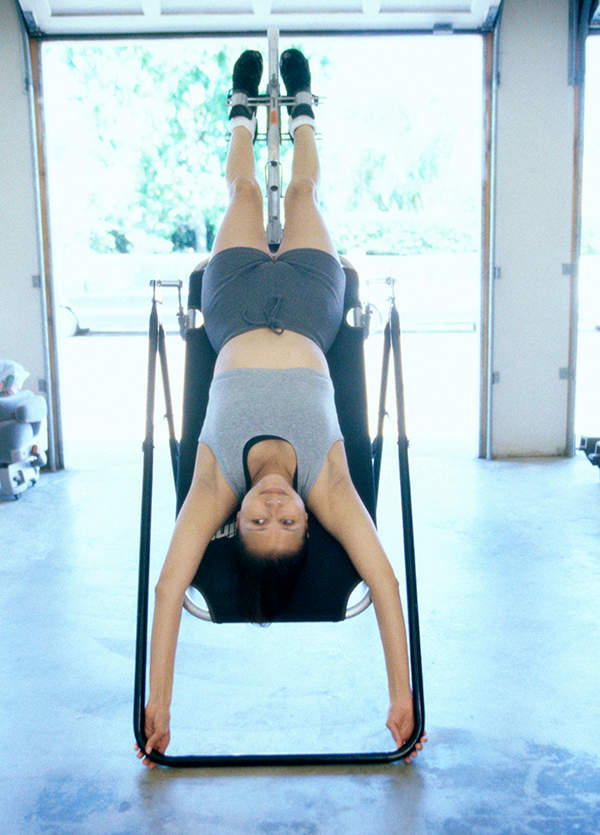
Are you thinking about trying inversion therapy? Or maybe you have never heard of inversion therapy? Then please keep reading because you need to know the upsides and the downsides of turning your body upside down.
翻转身体的方法已经存在了几十年,以此来抵消重力的影响。反转疗法是不是骗人的。配售脚高于头可以具有特别是对于那些有脊柱疼痛许多有益的作用。1978年,some researchers reportedthat the use of an inversion table both lengthens the spine and reduces muscle activities. A2012 studyfound that inversion therapy reduced the need for surgery in people with lumbar discogenic disease. It seems the anti-gravitational effect can help relieve painful muscle spasms and reduce painful compressive forces on the spine. Many physical therapists and doctors recommend inversion therapy because of its ability to provide a traction force that decompresses the spinal discs. With regular use, symptoms from spinal conditions like disc herniations, spinal stenosis, and degeneration can improve. Best of all, inverting can be done at home with either an inversion table or inversion chair. Now, you have to decide which device is right for you.
Inversion tables
Inversion tablesare the most common devices used to hang upside down; even though they are not the best devices for most people. Hanging completely upside down from the ankles strapped into anti-gravity boots is very aggressive. Some people like to be aggressive. Others find that 100 percent inversion is not really necessary for achieving the benefits of an inverted position. Besides, many people find 100 percent inversion too intense and too painful on the ankles and knees. Furthermore, inversion tables usually require a second person to spot and assist the individual hang from his/her feet. Unfortunately, the downsides of inversion tables are usually not discovered until after a purchase. If more people knew about an alternative inversion device to the table, more people would purchase the alternative — the inversion chair.
Inversion chairs
Inversion chairsallow you to place the head below the feet while in a seated position. Being seated has many upsides. This position is more comfortable with less pressure on the leg joints. Being seated allows for safer transitions, better balance recovery and blood pressure equalizing. Inversion chairs can be safely used alone. And although the chair does not go back all the way, this less intense inverted position of up to 70 percent still provides the same anti-gravitational effect on the body as 100 percent inversion. The main reason why I recommend the inversion chair over the inversion table is this: Being in a seated position provides better posture support and control for the lumbar spine and pelvis, otherwise inversion can place too much arching, extension forces on the sensitive posterior column of the spine. For this reason, I personally use an inversion chair (Health Mark brand) for my sensitive low back pain. And I love it.
If you want to try inversion therapy
Before you rush out to buy an inversion table or chair, please note that those with heart or circulatory conditions should check with their doctors before hanging upside down. Being upside down places a great deal of stress on the circulatory system. Because of the potential downsides of too much stress and pressure on the circulatory and skeletal system, being inverted is not for everybody. But the potential upsides of counteracting the effects of gravity are: less spinal disc pain, less joint pain, and less painful muscle spasms. If you do decide to try inversion therapy, as a rule, start slowly at a small degree of inversion (no more than 15 degrees) for no more than 5 minutes at a time. Easing into seeing the world upside down will help you to avoid the downsides and just experience the upsides of inversion therapy.

